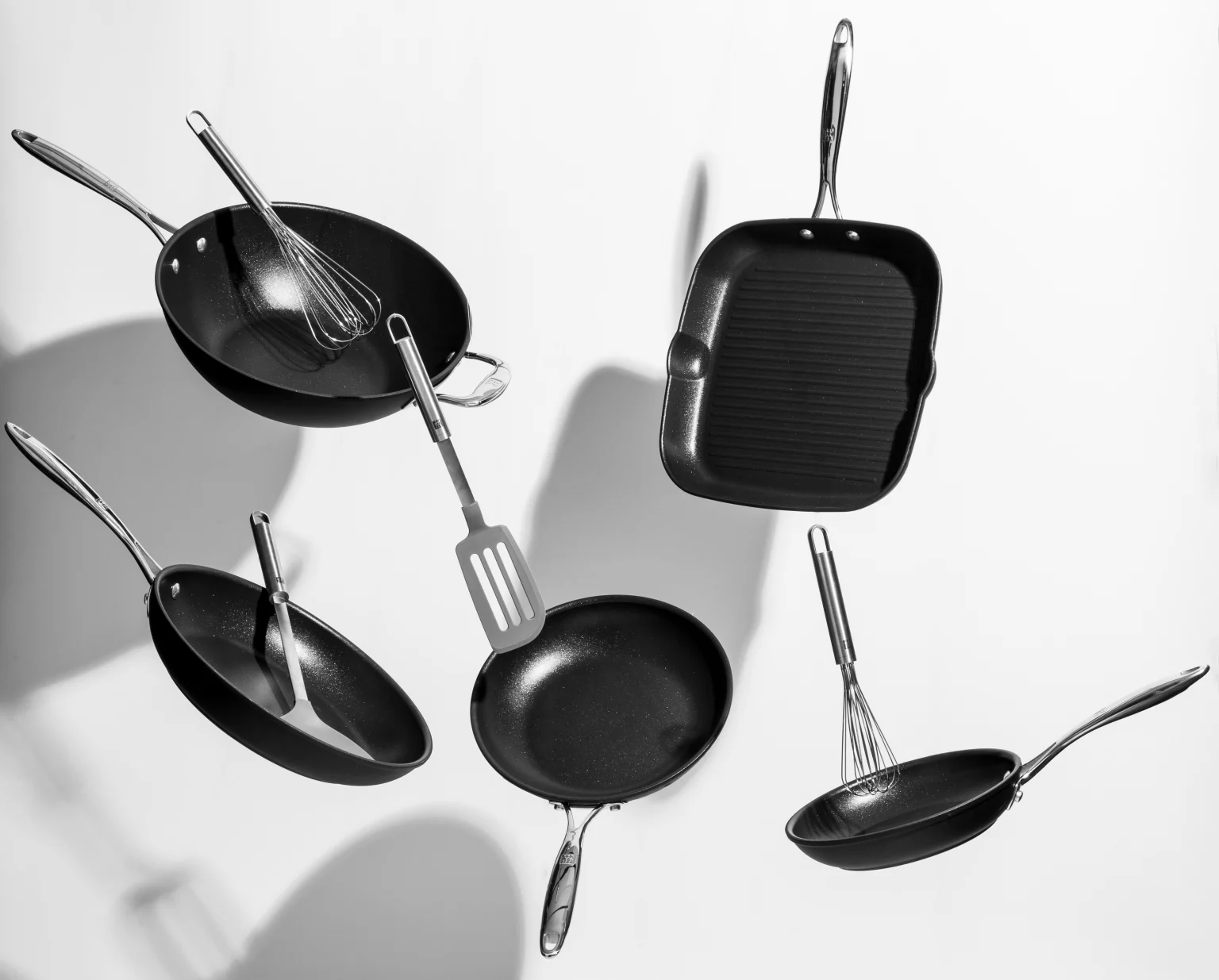Cast iron cookware is a kitchen staple that has been used for centuries. It’s durable, versatile, and can last a lifetime if properly cared for.
One of the key steps in maintaining cast iron cookware is seasoning, which involves the application of a layer of oil to create a non-stick surface and prevent rusting.
In this blog, we’ll walk you through the process of seasoning and maintaining your cast iron cookware in simple terms.
Part 1: Seasoning Your Cast Iron Cookware
1. Gather Your Supplies
To start the seasoning process, you’ll need the following:
- Cast Iron Cookware: This includes skillets, griddles, and Dutch ovens.
- Vegetable Oil or Shortening: You can use vegetable oil, canola oil, or even flaxseed oil.
- Paper Towels or Cloth: For applying the oil and wiping off excess.
- Aluminum Foil: To protect your oven’s racks from drips.
- Oven Mitts: To handle the hot cookware.
2. Preheat Your Oven
Preheat your oven to 350°F (175°C). Ensure that the oven rack is in the middle position.
3. Clean Your Cookware
Before seasoning, make sure your cast iron cookware is clean. You can rinse it with hot water and use a brush or scraper to remove any food residue. Avoid using soap, as it can strip away the seasoning.
4. Dry Thoroughly
After cleaning, dry the cookware completely using a towel or by placing it on a burner over low heat for a few minutes.
5. Apply a Thin Layer of Oil
Using a paper towel or cloth, apply a thin layer of oil to the entire surface of the cookware, inside and out, including the handle. Be sure to coat it evenly.
6. Remove Excess Oil
After applying the oil, use a clean paper towel to wipe off any excess. You want a very thin, almost invisible layer of oil on the cookware.
7. Place in the Oven
Place your cast iron cookware upside down on the middle oven rack, with a sheet of aluminum foil on the rack below to catch any drips.
8. Bake
Bake the cookware for one hour at 350°F (175°C). This allows the oil to polymerize and create a non-stick surface.
9. Cool and Repeat
Turn off the oven and let the cookware cool completely before removing it. You can repeat this seasoning process several times to build up a better non-stick coating.
Part 2: Maintaining Your Cast Iron Cookware
1. Cleaning After Use
After cooking, let the cookware cool slightly, but not completely, to make cleaning easier. Use a brush or scraper to remove any food residue. Avoid using soap, as it can strip the seasoning.
2. Rinse with Hot Water
Rinse the cookware with hot water to remove any remaining food particles. You can use a sponge or nylon brush if needed.
3. Dry Immediately
Dry the cookware thoroughly using a towel or by placing it on a burner over low heat for a few minutes.
4. Reapply a Thin Layer of Oil
Once your cookware is dry, apply a thin layer of oil to the cooking surface, similar to the seasoning process. Wipe off any excess oil.
5. Store Properly
Store your cast iron cookware in a cool, dry place. It’s best to stack cookware with a paper towel or cloth between them to prevent moisture buildup.
6. Avoiding Common Pitfalls
- Avoid Soaking: Never soak cast iron cookware in water for extended periods.
- Don’t Use Metal Utensils: To prevent scratching the seasoning, use wooden or silicone utensils.
- Handle with Care: Cast iron cookware is heavy, so be cautious when lifting and moving it.
7. Restoring Damaged Seasoning
If your cast iron cookware develops rust or the seasoning becomes uneven, you can restore it by repeating the seasoning process. Just scrub off the rust, re-season, and bake it in the oven.
8. Regular Use
The more you use your cast iron cookware, the better it becomes seasoned. Regular cooking helps maintain the non-stick surface.
Conclusion
Properly seasoning and maintaining cast iron cookware may seem like a bit of work, but it’s well worth the effort. With the right care, your cast iron cookware can provide years of reliable service and even be passed down through generations.
So, remember to clean, dry, and oil your cast iron after each use, and your trusty skillet or Dutch oven will reward you with delicious meals for years to come.
Looking to equip your kitchen with the best gadgets available? Explore TheReviewsGuru.com for comprehensive reviews and insights into the latest kitchen gadgets. Elevate your cooking game and make every meal a masterpiece!
FAQ
Why is seasoning important for cast iron cookware?
Seasoning creates a non-stick surface and protects the cookware from rusting by forming a layer of polymerized oil.
Can I use soap to clean cast iron cookware?
It’s generally best to avoid using soap, as it can remove the seasoning. Hot water and scrubbing with a brush or scraper are usually sufficient.
How often should I re-season my cast iron cookware?
You may need to re-season when the surface becomes uneven or develops rust. It’s a good idea to re-season if food starts sticking to the surface.
Can I use metal utensils with cast iron cookware?
It’s best to avoid metal utensils to prevent scratching the seasoning. Opt for wooden or silicone utensils.
Is it safe to put cast iron cookware in the dishwasher?
No, it’s not recommended to put cast iron cookware in the dishwasher, as the harsh detergents and moisture can damage the seasoning and promote rust.

